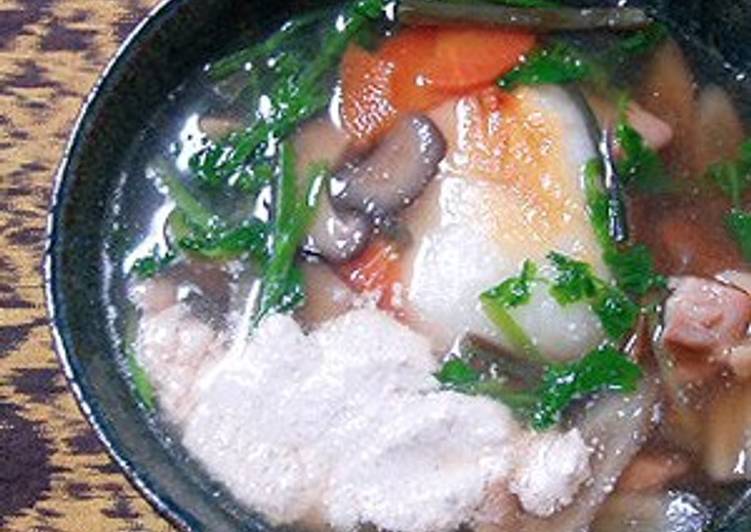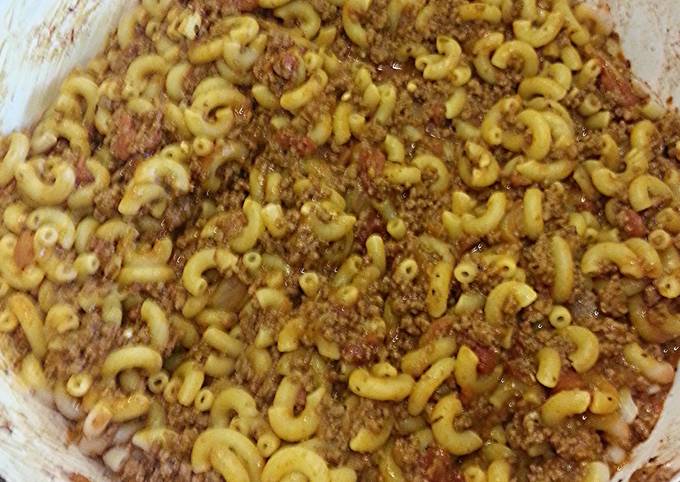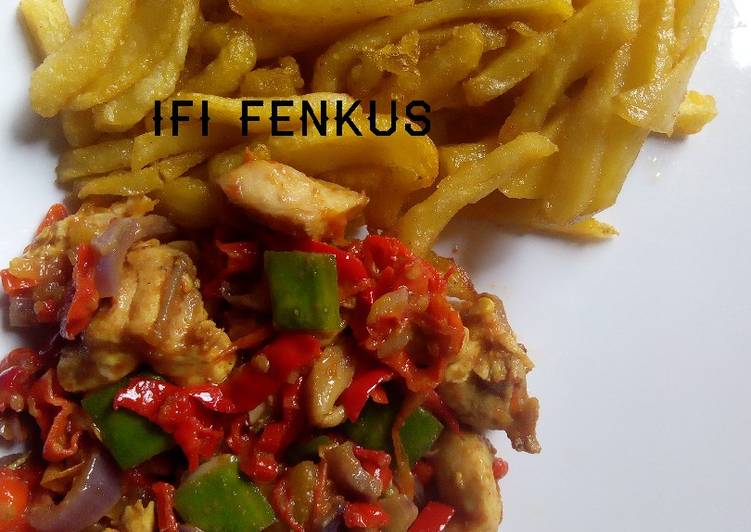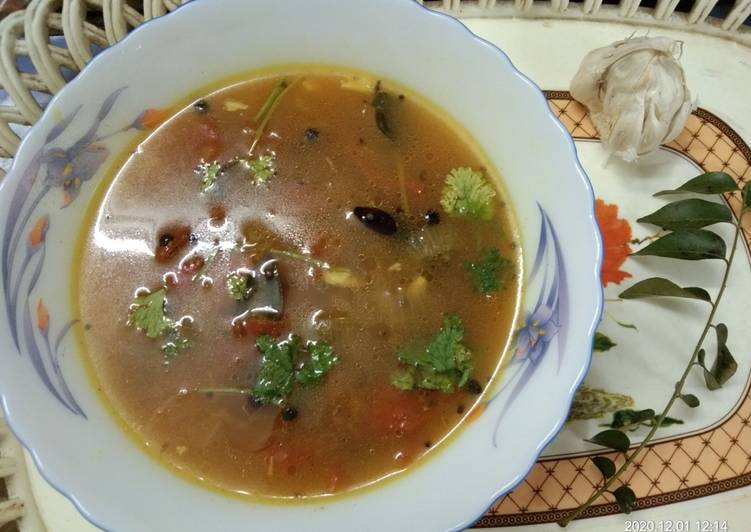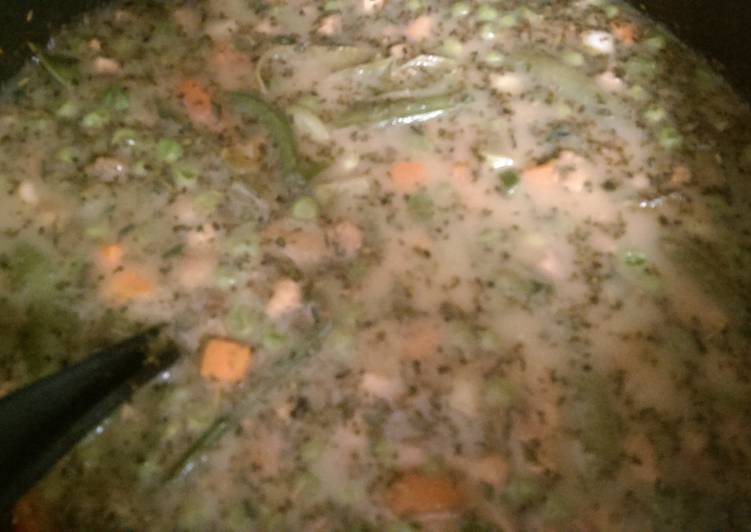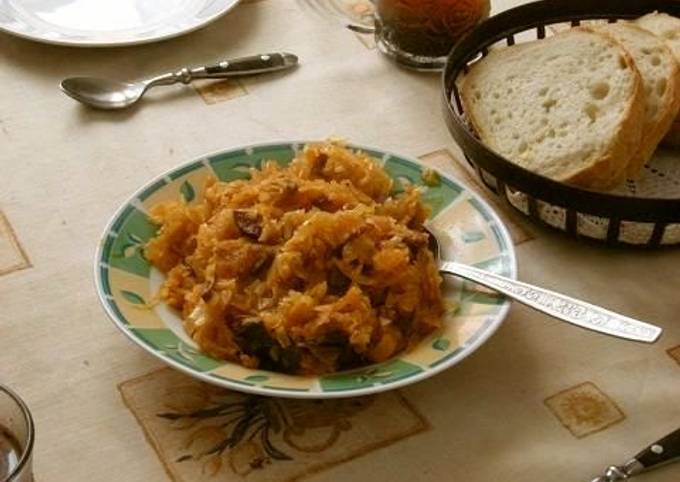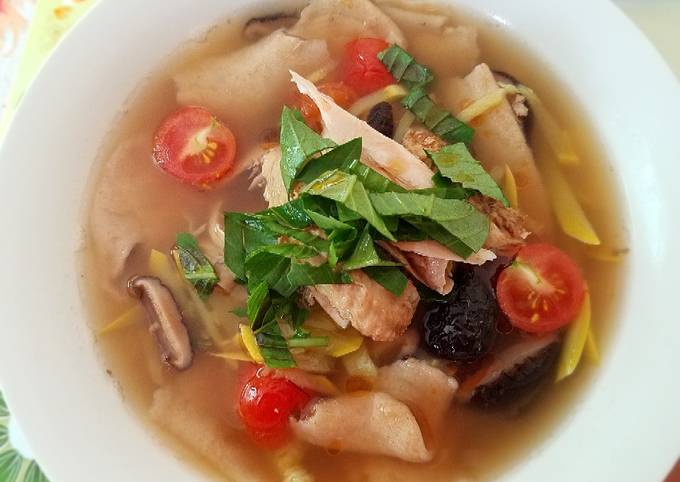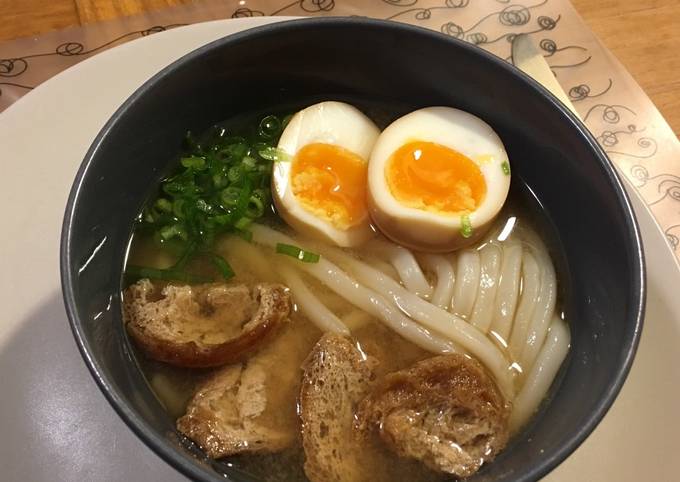
Hello everybody, it’s Drew, welcome to my recipe site. Today, we’re going to prepare a distinctive dish, udon noodles in miso soup. One of my favorites. This time, I’m gonna make it a little bit unique. This will be really delicious.
If you've followed my channel, you've noticed that I absolutely love (and quite addicted) to noodles in hot soup! Miso Nikomi Udon is a hearty and comforting noodle soup where chicken, fish cake, and udon noodles are simmered in a miso-flavored dashi broth. When it's cold outside, this noodle soup will warm you inside out. Miso udon noodle soup, also known as miso nikomi udon in Japanese, is a rustic dish of thick wheat udon noodles simmered in a savory miso broth with various ingredients such as fried tofu (aburaage), fish cake (kamaboko), chicken, and green onions.
Udon noodles in miso soup is one of the most well liked of recent trending meals in the world. It’s easy, it’s quick, it tastes yummy. It’s enjoyed by millions daily. Udon noodles in miso soup is something that I’ve loved my entire life. They’re fine and they look wonderful.
To begin with this recipe, we have to prepare a few components. You can have udon noodles in miso soup using 11 ingredients and 6 steps. Here is how you cook it.
The ingredients needed to make Udon noodles in miso soup:
- Take 1 tbs (Shiro) miso
- Make ready Just enough Dashi stock
- Make ready 1 egg
- Take 1 green union
- Get Aburaage or fried tofu puffs
- Take Portion size Udon noodles
- Make ready 2 tbs Soy sauce
- Get 1.5 tbs Mirin
- Get 1 small piece ofGinger
- Make ready 6 tbs Water
- Take Sugar (to taste)
The miso udon noodle soup has become one of my favourite now, not just because it is so delicious, but also because it's perfect for those days when you need to come up with a quick dish without Japanese Udon Miso Soup with shiitake mushrooms, a simple recipe packed with amazing flavours. Hearty, delightfully chewy udon noodles are a Japanese comfort food staple perfect for pairing with umami-rich broths. Here, we're making our udon noodle soup with white miso—a Japanese fermented soybean paste perfect for highlighting delicate flavors. We're finishing each bowl with a soft-boiled egg.
Steps to make Udon noodles in miso soup:
- First make the marinade for the ramen egg: mix the soy sauce, mirin, water en ginger in a ziplock bag. Bring water to a boil and boil the egg for exactly 7 min. Remove the egg from the water and let it cool down in some ice water. After a few minutes you can put the egg in the ziplock bag. Let the egg marinate for a few hours (preferably overnight)
- Make the soup: add dried dashi in a pan with panfrom, or when using fresh dashi: put as much as you like in a pan. Bring to a boil and add the miso. After adding the miso you should not let the soup come to a boil, this will ruin the miso flavour
- Prepare the noodles: boil the udon noodles according to the directions package. You can put the noodles in an ice bath to prevent further cooking and the noodles will not lose their chewy texture.
- Remove the egg from the marinade and add some sugar to the remaining liquid. Put all of it in a pan with the tofu. Let it cook for a few minutes
- Chop some green unions for garnish
- Assemble all the ingredients in a bowl and enjoy your meal(⌒▽⌒)
Here, we're making our udon noodle soup with white miso—a Japanese fermented soybean paste perfect for highlighting delicate flavors. We're finishing each bowl with a soft-boiled egg. A quick and easy, nutritious and delicious miso soup with prawns and udon noodles. Having some dashi, fresh or frozen, would be fantastic but if you haven't got any, just use some fresh water and follow the rest of the instructions. I think it makes the perfect quick lunch but is also perfect for dinner.
So that is going to wrap this up for this special food udon noodles in miso soup recipe. Thank you very much for reading. I’m confident that you will make this at home. There is gonna be interesting food in home recipes coming up. Don’t forget to save this page on your browser, and share it to your family, friends and colleague. Thank you for reading. Go on get cooking!


